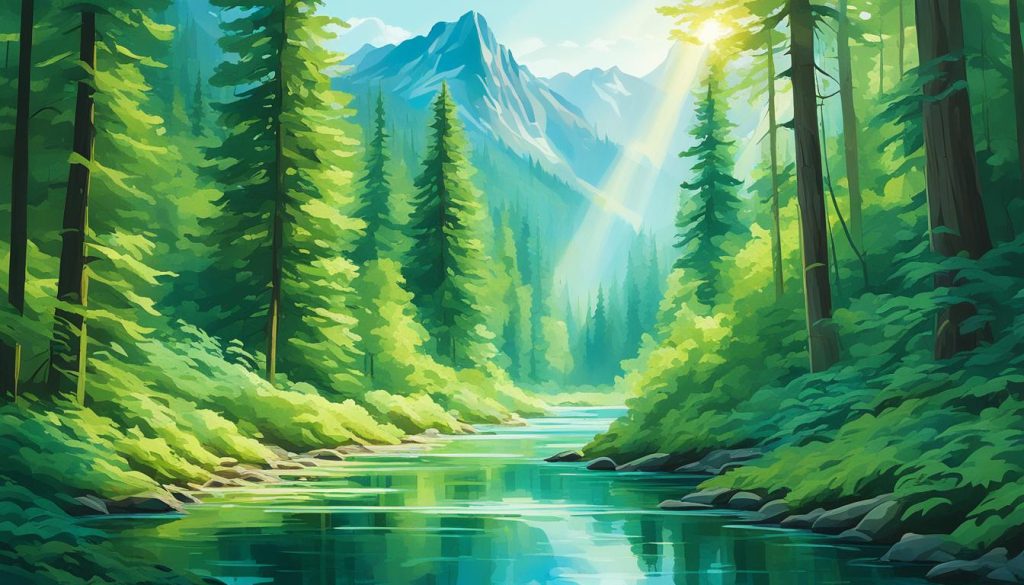As an avid nature enthusiast, I know the exhilaration of immersing myself in the great outdoors. Whether I’m embarking on a challenging hike, setting up camp for an overnight adventure, or simply exploring the beauty of Mother Nature, one critical factor always remains at the forefront of my mind: access to clean, safe drinking water. In this comprehensive guide, I’ll share the essential steps to effectively filter water in the wild, ensuring you stay hydrated and safe during your outdoor explorations.
Mastering the art of water filtration in the wilderness is a crucial survival skill that can make all the difference between a thrilling, worry-free adventure and a potentially dangerous situation. By following these four simple steps, you’ll be able to purify water from various sources, allowing you to fully immerse yourself in the beauty of nature with the peace of mind that comes from having access to clean, potable water.
Mastering the Art of Water Filtration in the Great Outdoors
As an avid outdoor enthusiast, I’ve learned the hard way that clean, drinkable water is the cornerstone of survival in the wilderness. Proper water purification techniques can mean the difference between a thrilling backcountry adventure and a dangerous, potentially life-threatening situation. In this section, I’ll dive deep into the importance of water filtration and the essential gear you need to stay hydrated and healthy while exploring the great outdoors.
Importance of Clean Water for Survival
When venturing into the wild, it’s crucial to understand the risks of consuming untreated water from natural sources. Untreated water can harbor a host of harmful bacteria, parasites, and contaminants that can cause severe illnesses such as giardiasis, cryptosporidiosis, and dysentery. Consuming contaminated water can quickly lead to dehydration, fever, and even life-threatening complications, jeopardizing your overall safety and well-being.
Essential Gear for Wilderness Water Filtration
Fortunately, there are numerous water purification methods and equipment designed to keep you safe and hydrated in the backcountry. From portable water filters to UV purifiers, the right gear can transform even the murkiest of wilderness water sources into crystal-clear, drinkable liquid. When choosing your water filtration system, consider factors such as size, weight, and the level of filtration needed to ensure you have the right tools for your outdoor adventures.
| Water Filtration Gear | Key Features | Ideal For |
|---|---|---|
| Gravity-Fed Water Filter | – Highly effective at removing bacteria, protozoa, and some viruses – Easy to use, no pumping required – Suitable for larger groups |
Base camps, group trips, and extended expeditions |
| Lightweight Pump Filter | – Compact and portable design – Removes bacteria, protozoa, and some viruses – Requires manual pumping |
Day hikes, short backpacking trips, and individual use |
| UV Light Water Purifier | – Effectively kills bacteria, protozoa, and viruses – No filter replacement needed – Lightweight and easy to use |
Rapid water treatment, suitable for solo or small group travel |
Regardless of the water filtration method you choose, remember to always follow the manufacturer’s instructions and properly maintain your equipment to ensure optimal performance and safety. Investing in the right gear can give you peace of mind and allow you to focus on the joys of exploring the great outdoors.

“Proper water filtration is not only a matter of convenience, but a critical component of survival in the wild. Protecting yourself from waterborne illnesses is essential for a safe and enjoyable outdoor experience.”
How to Filter Water in the Wild in 4 Steps
Staying hydrated is crucial during outdoor adventures, and the ability to filter water from natural sources is a vital survival skill. In this section, I’ll guide you through a step-by-step process to ensure you can safely and efficiently purify water from streams, lakes, and rivers while exploring the great outdoors.
First, it’s essential to select a water source that is clear, free of debris, and ideally running. Avoid stagnant or cloudy water, as these may contain harmful contaminants. Once you’ve identified a suitable source, use a water filter or purifier to remove any impurities. The Sawyer Products SP128 Water Filtration System is a reliable and lightweight option that can effectively eliminate bacteria, protozoa, and microplastics.
Next, prepare your filtration setup by connecting the water source to the filter inlet using a hose or tubing. Ensure a tight seal to prevent any leaks, and position the filter above your water collection container. Slowly and steadily, begin pumping or squeezing the filter to initiate the water purification process. This step may require some physical effort, but the peace of mind of having clean, safe water is well worth it.
After completing the filtration process, the final step is to store the purified water in a clean, airtight container. This will help maintain the water’s purity and prevent any potential recontamination. Remember to always practice good hygiene and avoid touching the filtered water with unclean hands or equipment. By following these four simple steps, you can ensure a reliable supply of clean, drinkable water during your wilderness adventures.



